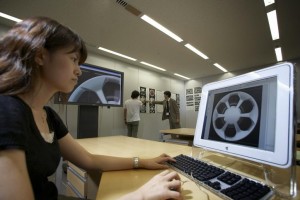How Technology Molded Car Production
With the easy access a considerable portion of the population has to a wide variety of highly efficient vehicles, it is easy to forget how far the automobile industry has come in the past several decades; the automobile industry has undergone incredible changes, not only due to the drastic changes and advancements that have occurred within the world of technology; but the industry itself has been key in developing powerful technologies that have gone on to change the dynamic of human existence.
Ø With efficiency in mind, you do not need your DVLA contact to realize just how drastic an impact advanced technologies have had on the automobile industry, primarily in three areas:
- The vehicles – vehicle designs have undergone drastic transformations in the past few years, the purpose of which has been to improve efficiency and performance while making available a number of increasingly environmentally friendly mechanisms through the use of alternative fuels such as hydrogen and fuel cells.
This compounded by intricate new body designs and raw material usage have made for a powerfully efficient machine.
- Manufacturing – not many can remember a time when car manufacturing was infused with more human parts than machinery, with the human element playing a powerful role in bringing these machines to life. Technological, specifically robotic transformations have brought to life a more efficient means of crafting and molding vehicles and bringing them to the public.
- Programs – More and more governments of more and more nations have shown willingness to provide grants and loans for research into advanced automobile technology, the purpose of which is to transform the industry.
- Manufacturing – there is not denying the fact that automobile production today is nothing like what it was in the past century. For several decades after the first car hit the streets, there was a definite similarity in the structure and design of most cars on the road, the technology basically uniform because of the ever unchanging technology that was Henry Ford’s assembly line.
One could then say that the production process is single handedly responsible for the boost in automobile technology that has occurred, because it was only after the evolution of the assembly line that powerful new machines began to arrive on the market.
This achievement can solely be placed at the door step of the robot.
Ø The initial function of the robot in the assembly line was to basically weld, to do the sort of repetitive work that tired the human out, that and performing dangerous tasks with dangerous material.
Ø The robot found its functionality in software and the engineering industry, with bright young minds inventing code that could manipulate the robot into doing actions drastically more accurate and precise than the human could; hence making them a more capable force than organic man power in the assembly line.
Ø The benefits of robots in the vehicle production industry cannot be overstated, with the machines reducing work injuries as well as strain related ailments; of course there is an increase in consistency as well as a reduction in costs, because of the accuracy of production, reduction of production costs and an increase in efficiency.
And of course robots do not tire or take sick days. The fact is in this day and age the vehicle production industry lies solely in the hands of automated systems, with human hands slowly being replaced by a mechanical function.
Ø As such technological advancements in the production industry are best imputed to have impacted or been impacted greatest by the following:
- Programming – this is the back bone of vehicle production, powerful programs like CAD that have brought the robot to life and mechanized the crafting process.
- Automation – one of the biggest consequences of technological advancements has been the injection of electronic components into the vehicle; where once they made up less than 25% of the car, now more than half of most vehicles are operated and controlled by electronic parts.
The ability to install tiny little circuits into the car has allowed for powerful new functionalities, while enabling the automation and mechanization of the most intricate processes of the production operation.
Overall the future of automobile production lies in automation and human free mechanization.
Content Copyrighted To TechnoWorldNews.com
Latest posts by Techno World News (see all)
- Elevating Security Paradigms in Marketing: A Holistic Expedition - November 22, 2023
- Why CMMS Is Becoming A Critical Component In The Manufacturing Industry - August 7, 2023
- How Safety Standards for Autonomous Vehicles will Help Reduce Serious Car Accidents - July 29, 2023






